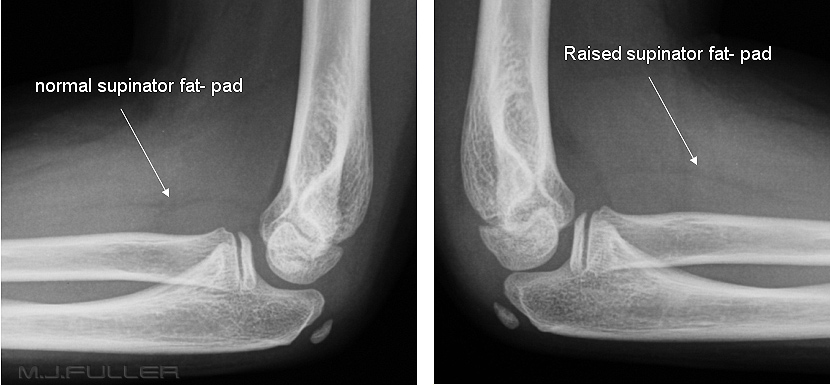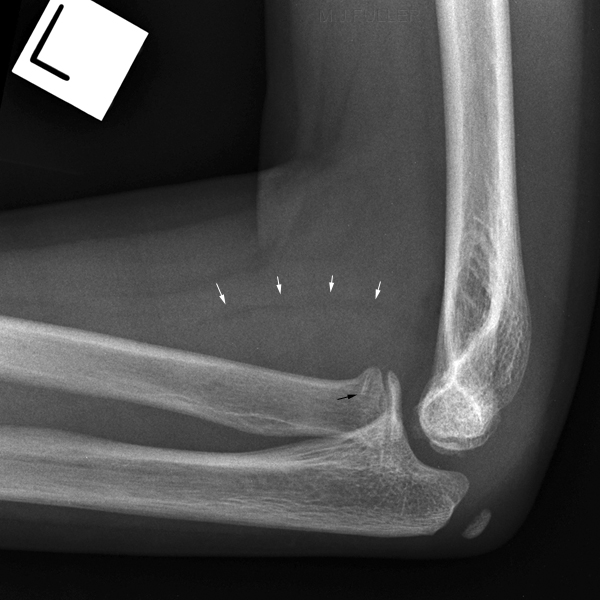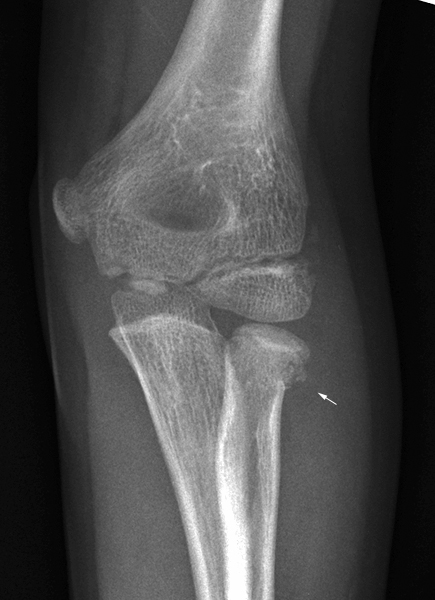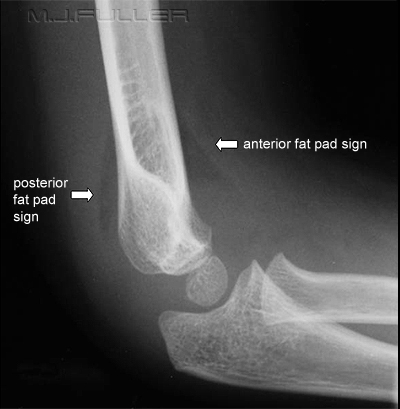Soft Tissue Signs- The Elbow
An equivocal fracture should be considered in the context of other information such as
- Patient history
- Clinical presentation
- soft tissue signs
This page will examine the soft tissue signs of bony injury of the elbow- what they are, their plain film appearances, their limitations, and their utility.
The Elbow
... back to the Applied Radiography home pageThe Supinator Fatpad Sign
The supinator fat pad can be raised or obliterated as a result of bony injury, particularly to the radial neck. It is one of those unreliable soft tissue signs, but is useful as a guide to potential bony injury. The images below are of an injured elbow and a comparison view (comparison view was probably not necessary). The normal elbow (image 1) demonstrates a normal supinator fatpad as well as a normal anterior fat pad (just because the anterior fat pad is visible, does not suggest it is abnormal). Image 2 is a lateral view of the injured elbow which shows a distended joint which has pushed the anterior fat pad into view (sail sign), and caused the supinator fat pad to be minimally raised.
Image 1. Comparison View Image 2. Injured Elbow
Tip
If you have trouble remembering whether it is the supinator fat pad sign or the pronator fat pad sign, think of a restaurant waiter. Waiters sometime carry soup bowls (i.e. "soupinator") in their elbows.
..... pronator fat pad at the wrist.... supinator fat pad at the elbow.
Supinator Fatpad Sign- Case 1
The Elbow Fat Pad SignThe fat pad sign or sail sign indicates that the patient has sustained an intra-articular injury. Importantly, it does not indicate that the patient has definitely sustained an intra-articular bony injury.
i.e. fat pad sign does not equal fracture
fat pad sign does indicate in increased chance of a fracture
There have been studies investigating the correlation between the fat pad sign and bony injury. These studies have reported an anterior fat pad sign indicates a probability of intra-articular fracture of approximately 70-80%, whereas a posterior fat pad sign indicates a 90% chance of intra-articular fracture. The anterior fat pad can be seen in a normal elbow. The posterior fat pad sign is never visible in a normal elbow.



